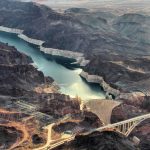The future of hydro in a warming world

People have harnessed energy from moving water for thousands of years. Greeks used various types of water wheels to grind grain in mills more than 2,000 years ago. In the late 1800s, people figured out how to harness the power to produce electricity. Throughout the 20th century and into the 21st, hydropower has expanded, producing about 17 percent of the world’s electricity by 2014 and about 85 percent of renewable energy—and it shows no signs of slowing. According to the online magazine WaterWorld, “An expected 3,700 major dams may more than double the total electricity capacity of hydropower to 1,700 GW within the next two decades,” —including in my home province of British Columbia, Canada, where the government has started a third dam on the Peace River at Site C. “Hydropower is the most important and widely-used renewable source of energy,” the U.S. Geological Survey says. But how “green” is hydropower, and how viable is it in a warming world with increasing water fluctuations and shortages? To some extent, it depends on the type of facility.

